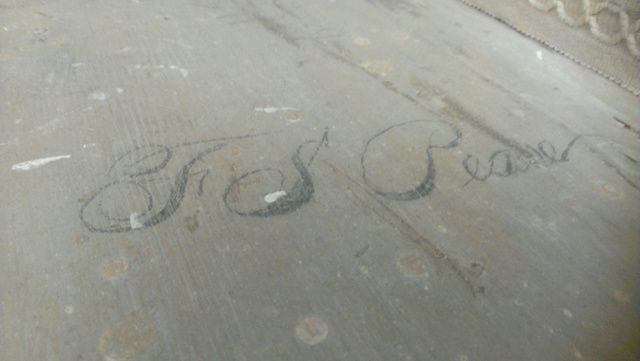
The National Trust for Historic Preservation has been cataloging some of the oldest graffiti in American history. Sometimes eerie, these scrawlings and carvings in old buildings are the predecessors of today’s graffiti artists. Instead of tagging with aerosol cans, they used anything they could find–even their own blood–to spread their message.
Descriptions of the photos were provided by Andy Grabel of the National Trust, and they are all courtesy of the Trust except where otherwise indicated.
Autographed Door by Walt Disney, Henry Miller, Elia Kazan (Shadows-on-the-Teche – New Iberia, La.)
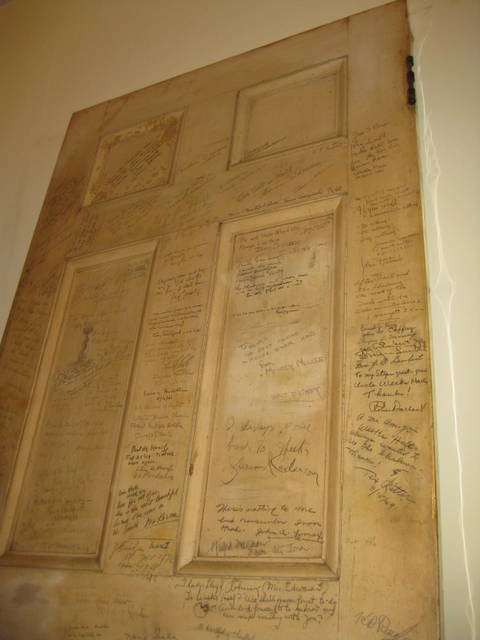 Courtesy of the National Trust for Historic Preservation
Courtesy of the National Trust for Historic Preservation
Several famous guests came to visit Shadows-on-the-Teche and owner Weeks Hall during the mid-20th century, including Walt Disney, writer Henry Miller, and directors DW Griffiths and Elia Kazan. They were among several guests to sign a door in the historic house that dates back to the 1830s. Hall was the great-grandson of the site’s original owner.
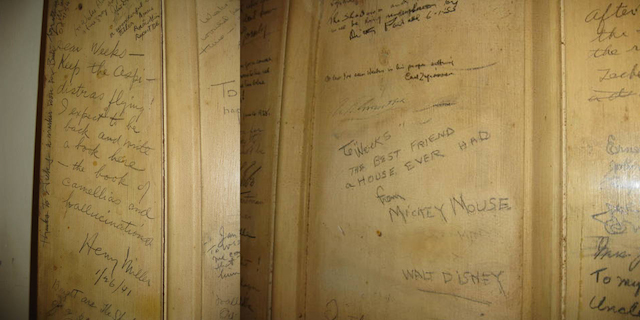 Courtesy of the National Trust for Historic Preservation
Courtesy of the National Trust for Historic Preservation
Blood Painting from Revolutionary War Battle (Cliveden – Germantown, Penn.)
The Battle of Germantown on October 4, 1777 was the most significant Revolutionary War event in the Philadelphia suburb, where Cliveden is located. An injured British soldier took refuge in Cliveden at that time and used his own blood to draw a profile portrait presumably of a loved one back home. The image is still visible on the wall of the historic site.
Growth Chart (Drayton Hall – Charleston, SC)
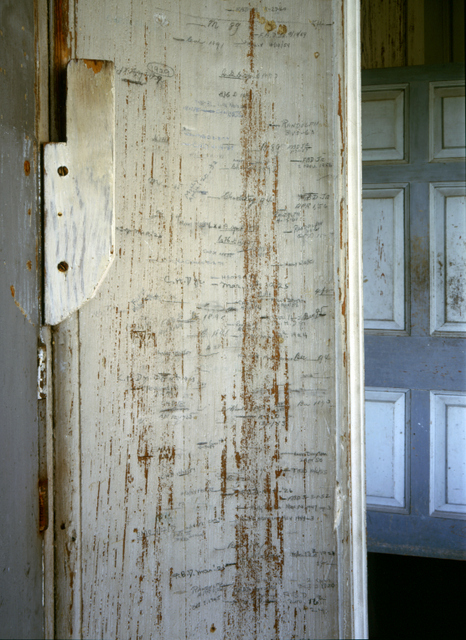 Photo by Michael O’Reilly. Courtesy of the National Trust for Historic Preservation
Photo by Michael O’Reilly. Courtesy of the National Trust for Historic Preservation
The tradition of measuring the Drayton children as they grew began in the 1880s and is still practiced today by members of the family. Charlotta Drayton (1884-1969) was the last member of the family to regularly use Drayton Hall as a country retreat. Never married, “Miss Charlotta” measured her dogs, including her favorite, Nipper (see below), who is buried at Drayton Hall.
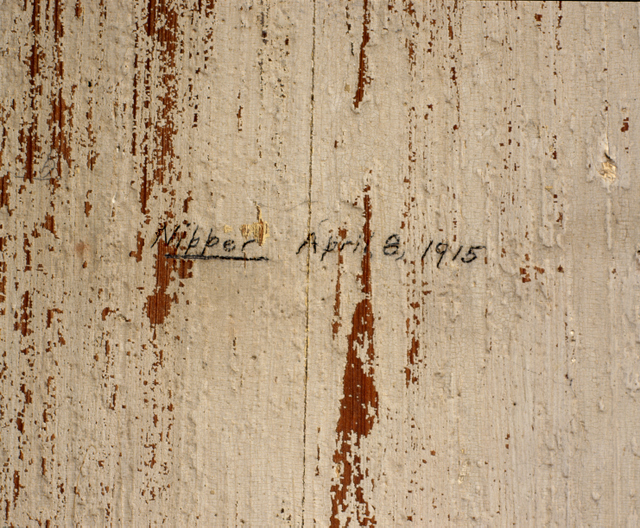 Photo by Michael O’Reilly. Courtesy of the National Trust for Historic Preservation
Photo by Michael O’Reilly. Courtesy of the National Trust for Historic Preservation
Skull & Crossbones Carving (Woodlawn – Alexandria, Va.)
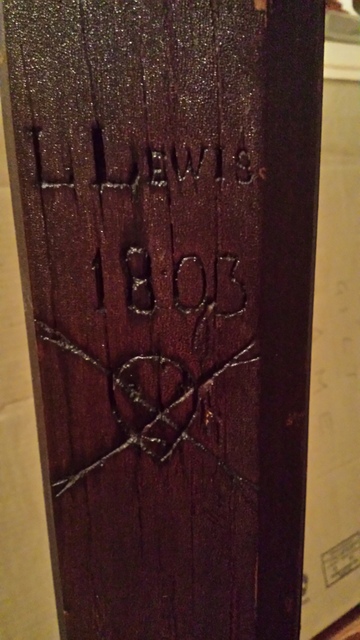 Courtesy of the National Trust for Historic Preservation
Courtesy of the National Trust for Historic Preservation
The Lorenzo Lewis carving was found during Paul Kester’s ownership (1901-1905). A worker replacing some roof and attic beams found the beam with Lorenzo’s signature and recognized its historical importance, so he replaced it with a new beam and made the beam with Lorenzo’s signature into a makeshift podium so it can be displayed. The carving reads “L. Lewis 1803” and has a picture of a skull and crossbones. 1803 is the year of Lorenzo’s birth.
Herbert Cooley Mark (Belle Grove Plantation – Middletown, Va.)
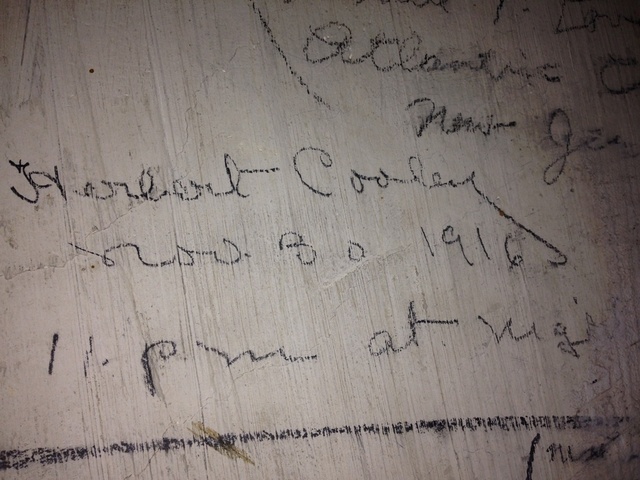 Courtesy of the National Trust for Historic Preservation
Courtesy of the National Trust for Historic Preservation
Little is known about Herbert Cooley or what occasion brought him to Belle Grove and the attic on Nov. 30, 1916, the date he recorded next to his name. A Cooley family owned Belle Grove from 1860-1867. Was Herbert a descendant? His note “11 p.m. at night” may reference that he was attending a party at Belle Grove, which is when many guests reportedly signed the wall of the attic.
Superintendents’ Signatures (Filoli – Woodside, Calif.)
 Courtesy of the National Trust for Historic Preservation
Courtesy of the National Trust for Historic Preservation
Every maintenance superintendent has signed their name and years of service on the lintel above the doorway of the reception room at Filoli going back to 1917.





